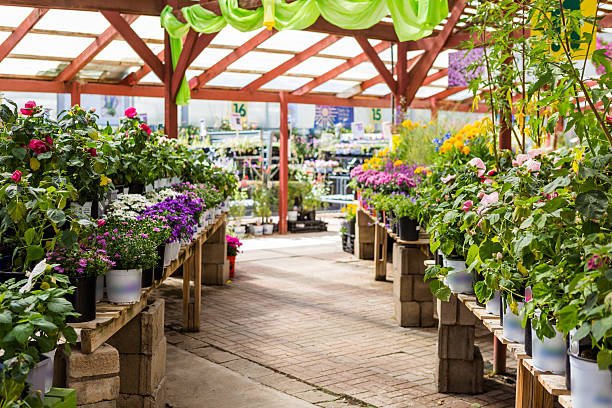Starting a home garden nursery is a rewarding project that offers the joy of cultivating plants, flowers, and vegetables right from the comfort of your home. Whether you’re a beginner or an experienced gardener, a few strategic steps will help you turn your garden into a thriving nursery. Here, we’ll walk you through essential tips to ensure your home garden nursery starts off successfully.
1. Choose the Right Plants for Your Space and Climate
When starting a home garden nursery, it’s important to select plants that are suited to your specific climate, soil type, and the amount of sunlight available in your space. Begin with plants that are hardy and easy to grow in your region.
- Research Your Zone: Look up your USDA Plant Hardiness Zone to find which plants will thrive in your area.
- Start with Easy Plants: Beginner-friendly plants, such as succulents, herbs, and perennials, are great for starting out.
- Consider Plant Varieties: Diversify your nursery by including plants of different sizes, colors, and growth habits for a visually appealing garden.
By focusing on plants suited to your environment, you set your gardens nursery up for success with minimal effort.
2. Prepare a Good Growing Medium
Healthy soil is essential for plant growth, as it provides the nutrients, water, and stability that plants need. A good growing medium will differ depending on the plants you choose, so it’s worth spending time to prepare the soil to ensure healthy plant development.
- Mix Organic Matter: Add compost, peat moss, or well-rotted manure to enrich your soil with essential nutrients.
- Ensure Proper Drainage: Good drainage prevents water from accumulating around plant roots, reducing the risk of root rot.
- pH Testing: Check the pH level of your soil. Most plants prefer slightly acidic to neutral soil, but it can vary by plant type.
Healthy soil is the foundation of a successful home garden nursery, so make this step a priority.
3. Invest in Basic Gardening Tools
Starting a garden nursery requires a few essential tools. The right equipment not only makes gardening more efficient but also ensures that your plants are cared for properly. A few must-have items include:
- Hand Trowel: Perfect for digging small holes and transplanting plants.
- Pruning Shears: Keep plants healthy and encourage growth by trimming off dead or overgrown branches.
- Watering Can or Hose with Nozzle: Proper watering is crucial, and a watering can or a hose with a gentle spray nozzle will help avoid damage to young plants.
Having these tools on hand makes it easier to care for your plants, giving them the best possible start.
4. Create a Watering and Maintenance Routine
Regular care is key to a successful garden nursery. Create a schedule for watering, fertilizing, and checking for pests to keep your plants healthy.
- Consistent Watering: Most plants need regular watering, but overwatering can lead to root rot. Check the moisture level in the soil to guide your watering.
- Fertilize Periodically: Use an all-purpose, balanced fertilizer or one specific to the plants in your nursery. This helps plants grow strong and produce vibrant blooms.
- Check for Pests and Diseases: Inspect your plants regularly for signs of pests or diseases. Catching problems early makes it easier to control them without harming the entire garden nursery.
A well-maintained garden nursery produces healthier, more resilient plants.
5. Plan for Growth and Future Transplants
In a home garden nursery, plants need space to grow. As your plants grow, they may outgrow their initial containers or planting areas, so planning for growth and transplanting is crucial.
- Give Plants Space: Avoid overcrowding by planting at appropriate distances or using individual pots that allow for growth.
- Know When to Transplant: Transplanting seedlings to larger pots or directly into the garden allows their roots to expand and access more nutrients.
- Rotate Plants as Needed: Move plants to spots with better lighting as needed, ensuring that they all receive adequate sunlight.
By planning for growth, you set up your plants for long-term success in your garden nursery.
Final Thoughts
Starting a home garden nursery is a fulfilling journey that adds beauty and vitality to your surroundings. By carefully selecting plants, preparing quality soil, investing in essential tools, creating a maintenance routine, and planning for growth, you set yourself up for success. For more information on gardening, landscaping, and lawn care tips, don’t hesitate to visit gardensnursery.com, where you’ll find a wealth of insights on cultivating a lush, thriving garden nursery right at home.






